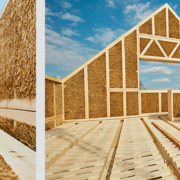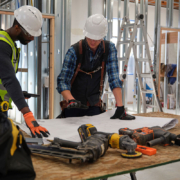EcoCocon and Ecological Building Systems announce exclusive partnership to expand straw panel construction in the UK & Ireland
In a significant move for sustainable construction, EcoCocon, a leading European manufacturer of prefabricated straw wall panels, has entered into an exclusive partnership with Ecological Building Systems, a well-established distributor of sustainable building materials in the UK and Ireland.
 The partnership will make EcoCocon’s innovative straw-based wall system more accessible to professionals across the UK and Irish construction markets — combining bio-based innovation with localised technical expertise.
The partnership will make EcoCocon’s innovative straw-based wall system more accessible to professionals across the UK and Irish construction markets — combining bio-based innovation with localised technical expertise.
EcoCocon’s modular wall panels are made primarily from compressed straw and timber, offering Passive House-level thermal performance while significantly reducing embodied carbon. The system is robotically manufactured in Europe to ensure precision, consistency and scalability — making it a viable solution for both single-family homes and large-scale developments.
With the addition of EcoCocon to its portfolio, Ecological Building Systems will provide full distribution and technical support, including design consultation, detailing, training, and on-site assistance.
“We’re proud to partner with EcoCocon to bring this next-generation ecological wall system to our region,” said Penny Randell, UK Director and General Manager at Ecological Building Systems. “It aligns perfectly with our mission of supporting healthy, low-impact buildings through science-led guidance and proven building solutions.”
Adrian Crosson, Irish Director & General Manager at Ecological Building Systems, stated:
“From the beginning, Ecological has focused on low embodied carbon solutions that are durable, purpose-fit for the UK and Ireland, and supported by expert technical guidance from design through to construction. By combining EcoCocon straw wall panel systems with our trusted technical support, we’re making sustainable building more accessible and achievable than ever before.”
EcoCocon has been used in hundreds of projects across Europe, from schools and apartment buildings to custom homes and co-housing developments. The system is fully certified, supports circular construction, and is designed for fast on-site assembly, reducing build time and waste.
“This partnership marks a key step toward scaling up ecological construction,” adds Paul Lynch, International Sales & Network Manager at EcoCocon. “Our aim is to make sustainable, low-carbon buildings not only possible, but practical. With Ecological Building Systems, we have the right partner to support that journey in the UK and Ireland.”
The two companies emphasise that this collaboration is about more than materials — it’s about enabling the construction sector to meet the growing demand for climate-conscious, human-centric buildings.
CLICK HERE FOR 
CLICK HERE FOR













